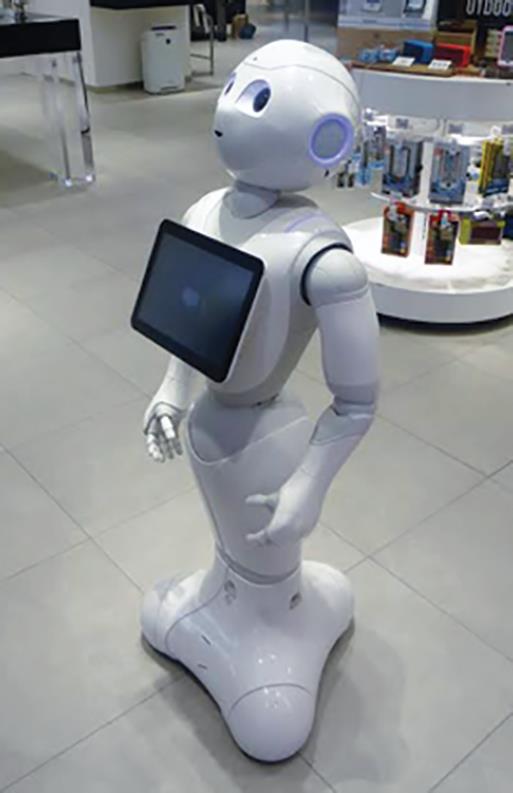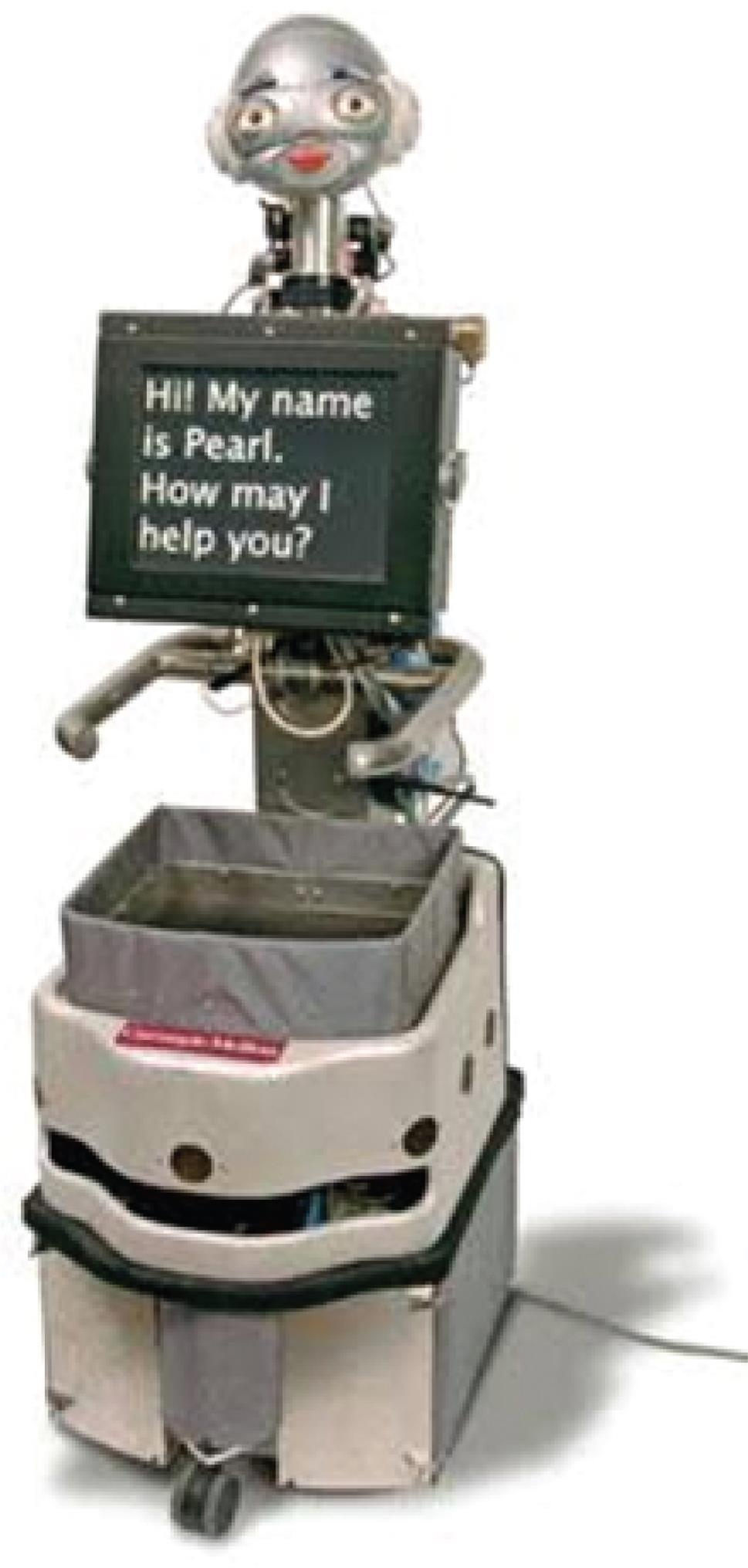LETTER TO THE EDITOR | https://doi.org/10.5005/jp-journals-10070-0051 |
Role of Robotics in Health Care of the Future
Department of General Surgery, Armed Forces Medical College, Pune, Maharashtra, India
Corresponding Author: Rahul Goel, Department of General Surgery, Armed Forces Medical College, Pune, Maharashtra, India, Phone: +91 9599591858, e-mail: unknownsince1986@yahoo.co.in
How to cite this article Goel R. Role of Robotics in Health Care of the Future. J Med Acad 2020;3(1):27–29.
Source of support: Nil
Conflict of interest: None
ABSTRACT
As the demands on medical professionals and healthcare infrastructure increase, the introduction of automation via robotics is inevitable. Robotics originated in science fiction literature and from there industrial robotic arms, and more recently surgical robotic devices have been created. In this article, we examine the types of robots, their development, and upcoming projects.
Keywords: Future, Medical, Robotics.
Three Laws of Robotics:
First Law
A robot may not injure a human being or, through inaction, allow a human being to come to harm.
Second Law
A robot must obey the orders given to it by human beings except where such orders would conflict with the First Law.
Third Law
A robot must protect its own existence as long as such protection does not conflict with the First or Second Laws
— Issac Asimov1
The thought of a society in which robots live alongside humans has tickled our imagination since ages. Earlier what was science fiction is now reality. Already many of our daily chores like washing dishes or heating food are automated. In the automobile industry and other heavy manufacturing plants, critical work which is dangerous yet requires precision is given over to automated arms.
Stephen Hawking, famously said that “unless mankind redesigns itself by changing our DNA through altering our genetic makeup, computer-generated robots will take over our world”.2 Although such a fate may seem far-fetched at present, the day is not remote when most of our routine tasks would be taken over by robots.
In medical school, all budding doctors are taught the paramount importance of soft skills, of making the patient comfortable, and gaining his trust. These things have been seen as vital to the doctor–patient relationship. However, in recent times, early diagnosis of disease, longer life spans, higher burden of geriatric population, lack of enough staff, and information overload have tremendously increased the demands of patients on healthcare experts and strained this relationship. This combined with challenges relating to financial cuts creates an atmosphere, where the healthcare providers are progressively considering robotics to assist them in treating and caring for patients.
The word “Robot” is derived from the Czech word Robota which means “slave”.3 In the modern sense, it is a physical machine that is programmable by a computer and can execute tasks autonomously, basically machines that can sense, think, and act independently.4
The evolution of medical robots is relatively recent. From the first automated arm in the 1980s to the first robotic cholecystectomy5 to the latest generation Da Vinci Xi robots, we have come a long way in a very short time (Fig. 1).
Robots are useful in a variety of situations. They are used as a surgical tool to assist surgeons in carrying out complex surgeries that require accuracy and precision. But robots are also used as a supportive device to provide care, support, and improve the fitness and lifestyle of patients. As such, robots currently can be used in diverse ways such as:
REHABILITATIVE AID
A rehabilitation robot is designed to improve the movement of a patient with impaired physical functioning. There are two main types of rehabilitation robots: The first type is an assistive robot that substitutes for lost limb movements. Some examples are robotic exoskeletons6 and robotic prosthetic limbs7 (Figs 2 and 3). The second type is a therapy robot, for example, Pepper8 can read a patient’s facial expressions, body language, and the words they use (Fig. 4). Artificial intelligence can be incorporated into such robots enabling humans and robots to have conversations to help elderly people around the house and reduce loneliness.

Fig. 1: The-line of development of medical robotics

Fig. 2: A prosthetic exoskeleton to help in the mobility of paralyzed patients

Fig. 3: A bionic hand can give almost full functionality as a natural hand

Fig. 4: Pepper is the world’;s first social humanoid robot able to recognize faces and basic human emotions

Fig. 5: Robot for interactive body assistance (RIBA) is a robotic nurse that can lift a patient and move them to another location
NURSING ASSISTANCE AID
As robots can work tirelessly and are always precise, robots can help processes such as the delivery of medicines, food, meal trays, and maintain patient records. RIBA, which stands for “Robot for Interactive Body Assistance,” is a robotic nurse that can lift a lying or sitting patient and move them to another location (Fig. 5). Pearl is an assistant robot and reminds people about routine activities as well as guides the elderly through their surroundings (Fig. 6).
SURGEON ASSISTANCE AID
Robots can be used in surgery to provide a surgeon with more accuracy, regulation, and flexibility in comparison to conventional methods. This is why robotic surgery is often used for minimally invasive procedures, such as robot-assisted laparoscopy. The Da Vinci Xi robot is the latest and most advanced such device. It has been developed by Intuitive Inc, Sunnyvale, USA (Fig. 7).
TELEMEDICINE AID
Robots can transmit and receive video, audio, and navigation directions and also take measurements by connecting to other devices such as computed tomography scanners and MRIs. This can assist patients from remote areas get a consult as well as perform procedures across vast distances.9 An Indian cardiologist performed the world’s first tele-robotic coronary stenting from a distance of 32 km in December 2018.10
Developing robots that can perform the abovementioned tasks is not easy. It takes millions of dollars, thousands of man hours, and years of RandD to come up with them. Some of factors that have to be kept in consideration when designing robots are as follows:
Patient Safety
The design of the robot must have no adverse effects on the patients’ health. This is achieved by limiting possible errors that can occur with the robot.
Control
A robot must instantaneously respond to control commands from the user. The designer must also consider who will control the robot.

Fig. 6: Pearl is an interactive assistant robot for the elderly

Fig. 7: Da Vinci Xi is the latest robot for minimally invasive surgeries
Operation
The robot is required to perform actions or functions as desired by the user. This needs to be in an easy and efficient manner with minimal complexity.
Accessibility
Robots are very expensive devices. Enhancing their availability to different departments of the same hospital or different hospitals will improve their accessibility and help break even on costs. The benefits of robotic surgery can be availed by a wider range of patients.
Autonomy
The level of autonomy in robots refers to how much guidance is given to the robot to perform a task. A high level of autonomy would be that a robot is able to carry out tasks with no human assistance. A low level of autonomy would require more human guidance and involvement.
With the concerted efforts of doctors and bio-engineers, we have at present state-of-the-art robots. These robots are set to revolutionize the way we provide medical care to our patients. Soon, entire hospitals would be automated. From the staff greeting people at the reception desk, to the nurses in the wards to the surgeons in the operating room, all tasks would be performed by sentient or semi-sentient humanoid robots backed by a room full of doctors sitting in front of consoles, monitoring their every move.
At the end, all I can say is that robots are here to stay, and we must make space for them. They are our medical colleagues of the future.
REFERENCES
1. Asimov I. I, Robot. Doubleday; 1950.
2. Rise of the machines: how computers could control our lives. The Conversation.
3. Hockstein NG, Gourin CG, Faust RA, et al. A history of robots: from science fiction to surgical robotics. J Robot Surg 2007;1(2):113–118. DOI: 10.1007/s11701-007-0021-2.
4. Lazar JF. Cutting the optical leash: rethinking the “Robot” in robotic surgery. J Robot Surg 2019;13(6):787–788. DOI: 10.1007/s11701-019-00978-3.
5. Himpens J, Leman G, Cadiere GB. Telesurgical laparoscopic cholecystectomy. Surg Endosc 1998;12(8):1091. DOI: 10.1007/s004649900788.
6. Gorgey AS. Robotic exoskeletons: the current pros and cons. World J Orthop 2018;9(9):112–119. DOI: 10.5312/wjo.v9.i9.112.
7. Gopura R, Kiguchi K, Mann G, et al. Robotic prosthetic limbs. J Robot 2018;2018:1085980. DOI: 10.1155/2018/1085980.
8. Boumans R, Van Meulen F, Hindriks K, et al. Robot for health data acquisition among older adults: a pilot randomised controlled cross-over trial. BMJ Qual Saf 2019;28(10):793–799. DOI: 10.1136/bmjqs-2018-008977.
9. Anvari M, McKinley C, Stein H. Establishment of the world’s first telerobotic remote surgical service: for provision of advanced laparoscopic surgery in a rural community. Ann Surg 2005;241(3):460–464. DOI: 10.1097/01.sla.0000154456.69815.ee.
10. Indian cardiologist performs world’s first telerobotic surgery from a distance of 32 km. India Today. https://www.indiatoday.in/education-today/gk-current-affairs/story/indian-cardiologist-performs-world-s-first-telerobotic-surgery-from-a-distance-of-32-km-1403577-2018-12-06 . Published 2018.Accessed December 26, 2019.
________________________
© The Author(s). 2020 Open Access This article is distributed under the terms of the Creative Commons Attribution 4.0 International License (https://creativecommons.org/licenses/by-nc/4.0/), which permits unrestricted use, distribution, and non-commercial reproduction in any medium, provided you give appropriate credit to the original author(s) and the source, provide a link to the Creative Commons license, and indicate if changes were made. The Creative Commons Public Domain Dedication waiver (http://creativecommons.org/publicdomain/zero/1.0/) applies to the data made available in this article, unless otherwise stated.